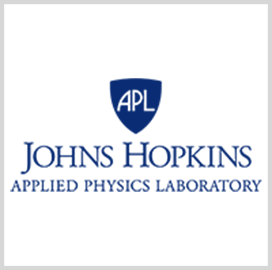
NASA has chosen Johns Hopkins University Applied Physics University to provide spacecraft for a mission that will aim to examine a Saturn moon as part of the agency’s New Frontiers solar system exploration program.
APL said Thursday it will lead a consortium to launch the Dragonfly rotocraft lander by 2026 to assess Titan’s atmosphere and collect samples from its surface in efforts to help researchers study potentially habitable elements and probiotic progression in areas where liquid water once existed.
Lockheed Martin‘s (NYSE: LMT) space segment, Malin Space Science Systems, Honeybee Robotics, Penn State University and the Japanese aerospace exploration agency will support the Dragonfly mission.
“This mission is a visionary combination of creativity and technical risk-taking that will help us unravel some of the most critical mysteries of the universe including, possibly, the keys to our origins,” said APL Director Ralph Semmel.
Jim Bridenstine, NASA administrator and 2019 Wash100 Award recipient, said he believes the mission could “revolutionize what we know about how life formed in the universe.”
Dragonfly has been used on autonomous Earth-based missions and will use 13 years of data from NASA’s recently concluded Cassini mission to Saturn as part of the Titan exploration initiative.
The agency expects the spacecraft to reach its intended destination in 2034.




